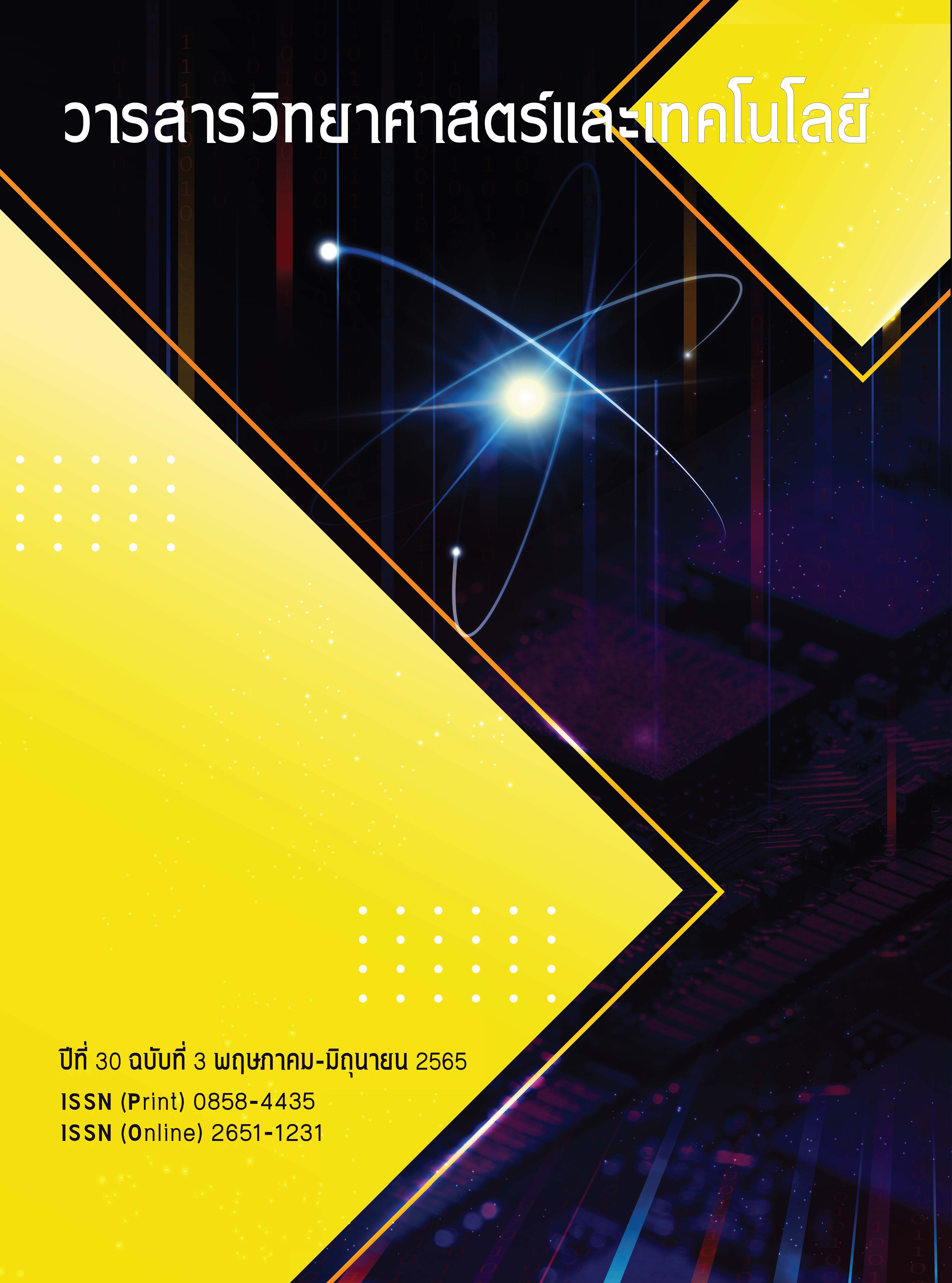Study of Optimal Extraction Conditions and Antioxidant Activity of Schoutenia glomerata King subsp. peregrina (Craib) Roekm Leaves and Flowers
Main Article Content
Abstract
Schoutenia glomerata King subsp. paregrina (Craib) Roekm, commonly known as the yellow star, is a medium perennial plant of the family Malvaceae. Due to the restricted report of bioactive compounds, the present work aims to study the antioxidant activity of leaves and flowers from this species. The data obtained can be further used for value product development. Leaves and flowers of the yellow star were firstly collected and then extracted with three different solvents, including distilled water, methanol, and ethanol, using the ratio of 1:20 for 1 h at 30 ± 2oC. After that, the extracts were determined for the antioxidant activity via ABTS and DPPH methods. The results
illustrated that ethanol was the most suitable solvent for extracting the bioactive compound from the leaves and flowers of the yellow star. Antioxidant activity of leaf and flower extracts exhibited an antioxidant potential (IC50 = 0.53±0.03 and 0.71±0.01 mg/g). The antioxidant capacity of leaf and flower extracts determined by the ABTS method was equal to 1.48±0.86 and 0.93±0.73 Trolox
equivalent antioxidant capacity (TEAC), respectively. Afterward, the concentration of ethanol and extraction period were studied. The IC50 of DPPH scavenging activity of leaf and flower extracted by 4% ethanol (v/v) for 90 min was 0.34±0.01 and 0.37±0.03 mg/mL, respectively, whereas the maximum ABTS•+ scavenging capacity was found to be 1.86±4.26 and 1.64±4.15 TEAC, respectively.
Article Details
References
Athawongsa, K., Yellow star plant of the King Rama 10, Available Source: https://pharmacy.mahidol.ac.th/th/knowledge/article/377, April 8, 2022. (in Thai)
Halee, A. and Rattanapun, B., 2017, Study of antioxidant efficacies of 15 local herbs, KMUTT R&D Journal. 40(2): 283-293. (in Thai)
Huabbanhyang, O., Buanong, M., WongsAree, C., Techavutthiporn, C. and Srilaong, V., 2010, Study of nutritional and free radical scavenging activity in edible flowers, Agricultural Sci. J. 41(3/1) (Suppl.): 381-384. (in Thai)
Oliverira, A. M. F.D. Lilian, S. P. Charlane, K. S. P. Wemerson, N. M. Roosevelt, A. G. Otemberg, S. C. Maria, D. F. V. D. S. Reinal do, N. D. A. and Temilce, S. D. A., 2012, Total phenolic content and antioxidant activity of some malvaceae family species, Antioxidants. 1(1):33-43.
Santos, B.C.S., Silva, J.J.M., Gasparetto, C.M., Chibli, L.A., Rodrigues, K.C.M., Del-Vechio-Vieira, G., Alves, M.S. and Sousa, O.V., 2014, Antioxidant potential of Gossypium hirsutum L. (Malvaceae) using DPPH, ferric reducing antioxidant power, β-carotene bleaching and bioautography assay, Planta Med. 80(16):1403-1403.
Azadeh, Z., Saeidi, K., Lorigooini, Z., Kiani, M. and Maggi, F., 2020, Organoriented phytochemical profiling and radical scavengingactivity of Alcea spp. (Malvaceae) from Iran, SN Appl. Sci., https://doi.org/10.1007/s42452-020-2410-3.
Rodglin, C., Srisook, A. and Srisoon, K., 2017, Effects of extraction conditions on total phenolic content, total flavonoid content and antioxidant activities of different parts of Citrus aurantium L., BUSCIJ. 22(1): 211-225. (in Thai)
Hatano, T., Kasawa, H., Yashuhara, T. and Okuta, T., 1988, Two new flavonoids and other constituents in licorice roots: their
relative astringency and radical scavenging effects, Chem. Pharm. Bull. 36: 295-299.
Cao, G., Alessio, H.M. and Cutler, R.G., 1993, Oxygen-radical absorbance capacity assay for antioxidant, Free Radic. Biol. Med. 14: 303-311.
Saenprakob, P. and Sangmanee, K., 2019, Application of roselle extract in blush cream, Walailak Procedia. 2019(3): 1-5. (in Thai)
Pulgarín, J.A.M., Bermejo, L.F.G. and Durán, A.C., 2017, Determination of antioxidant activity of Hibiscus flowers by flow injection analysis with chemiluminescence detection, Anal. Lett. 50, https://doi.org/10.1080/000332719.2016.1167216.
Dumrongphuttidecha, T., Thungmungmee, S., Khobjai, W., Wisidsri, N. and Techaeoi, S., Antioxidant and free radical scavenging activity of Hibicus acetosella leaves extracts, Int. J. Appl. Pharm. 11(special Issue 5): 86-89.
Pozos, G.I.P., Ruiz-Lopez, M.A., Nátera, J.F.Z., Moya, C.A., Ramírez, L.B., Silva, M.R., Macías, R.R., García-López, P.M., Cruz, R.G., Pérez, E.S. and Radillo J.V., 2020, Antioxidant capacity and antigeno- toxic effect of Hibiscus sabdariffa L. extracts obtained with ultrasound assisted extraction process, Appl. Sci., doi:10.3390/app10020560.
Banwo, K., Sanni, A., Sarkar, D., Ale, O. and Shetty, K., 2022, Phenolics-linked antioxidant and anti-hyperglycemic properties of edible roselle (Hibiscus sabdariffa Linn.) calyces targeting type 2 diabetes nutraceutical benefits in vitro, Front. Sustain. Food Syst., doi:10.3389/fsufs.2022.660831.


